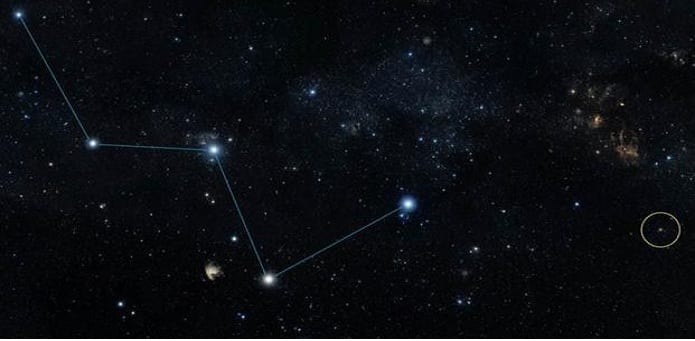Table Of Contents
Astronomers discover three super Earths orbiting a star located 21 light years away
Astronomers uncover a ‘secret planetary system’ which comprises of three super-Earths and one outer giant planet that is situated at a distance of 21 light years from Earth.
By using the HARPS-N spectrograph, a high-precision radial-velocity instrument, installed at the Telescopio Nazionale Galileo at the Roque de los Muchachos Observatory (Canary Islands), astronomers from St Andrews University have discovered an exceptional “secret planetary system”.
Named as HD219134, this new planetary system is in the constellation Cassiopeia and it comprises of three super-Earths orbiting an outer giant planet, one of which which transits in front of the star.
The planetary system is located at a distance of 21 Light years from Earth and astronomers already have made plans to take pictures of the new “Stars”.
According to the researchers the transiting super-Earth, has a density similar to that of our Earth and it is by far the closest transiting planet known today.
Researchers say that the transiting star would be their ideal candidate for studying the planetary formation, its internal composition and atmosphere.
According to researchers, this star, HD219134 also known as HR 8832, a 5th magnitude K dwarf, is quite bright and can be seen with a naked eye from dark skies any time of the year in our boreal hemisphere. Located next to one leg of the W-shaped Cassiopeia constellation the star is less massive and much colder when compared to the Sun of our Solar System.
The entire planetary system comprises of three mostly rocky super-Earths and an outer giant planet. Researchers say this is somewhat similar to the configuration of our Solar System. By determining the size, mass and density scientists would be able to know if the planet is rocky like Earth or gaseous like Jupiter or is it icy like Pluto
Ati Motalebi, an astronomer at University of Geneva (UNIGE) and first author of the paper describing the discovery says: “When the first HARPS-N radial-velocity measurements indicated the presence of a 3-day planet around HD219134, we immediately asked NASA for Spitzer space telescope time.”
She added: “The idea was to check for a potential transit of the planet in front of the star, a mini eclipse, that would allow us to measure the size of the planet.”
It seems HD219134b indeed does transit the star and it is by far the closest transiting planet known till date. This planet with the shortest orbit however has an atmosphere approximately 700 degrees Kelvin (800 Fahrenheit) which indicates that it does not fall in the habitable zone.
Further, by using the ground-based radial velocities researchers obtained the mass of the planet which they combined with the planet radius that was derived from the observations made by NASA’s Spitzer space telescope and thus calculated the ‘mean density of the planet’.
Accordingly it was discovered that HD219134b is 4.5 times massive and 1.6 times larger than Earth, thus it got its name “Super-Earth”. This indicates that the mean density of the super-Earth is almost similar to the density of the Earth which suggests the possibility of similarity in composition as well.
With HARPS-N radial velocities the researchers have also discovered three longer-period planets in the inner regions of this secret system.
One planet which weighs 2.7 times the Earth takes 6.8 days to orbit HD219134 while another planet which is almost 8.7 times the mass of the Earth takes around 46.8 days to orbit HD219134.
According to researchers “If, by chance, these two planets would be in a coplanar configuration with their third inner sister, HD 219134b, as often observed for compact systems, the whole family might be transiting”.
The research will be soon published in the Astronomy & Astrophysics journal.

